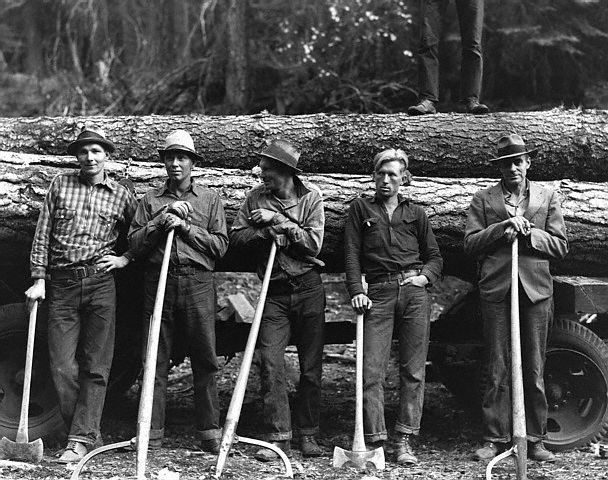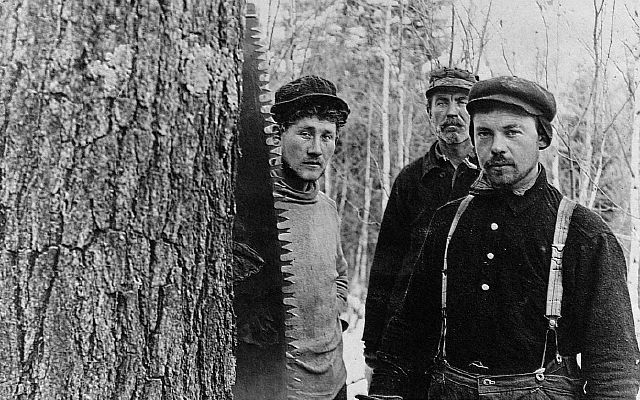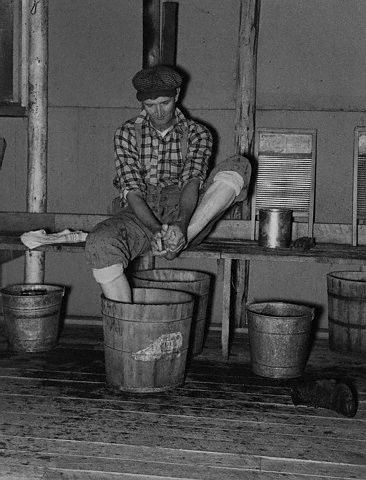*

Circa 1939, Ola, Idaho — Farmers turned Loggers with a load ready to go to their self-help cooperative sawmill, started with a Farm Security Administration loan.
*
From the desk of Contributing Editor, Eli M. Getson–
The thing about great American design is that, for the most part, function is the driving element. It’s this functionality that’s ultimately the true spirit of what MADE IN AMERICA stands for. It ain’t about being pretty; it’s about being tough and working the way it’s supposed to. A lot of it harkens back to a time when Americans toiled long and hard outside, with their hands, and demanded gear that could hold up to their hard-scrabble lives, and unforgiving the elements. The gear was simple, honest, and true. You got your money’s worth.
Our forebears would probably be more than slightly amused by the fact that many of today’s American workwear brand purists are not loggers, miners, and metal workers– however, the quality, core values, and classic designs behind these brands still resonate deeply within us. I believe down inside, most of us value the dignity of hard work, quality goods, and simpler times. There’s something honest and pure that’s sadly missing in the daily gadget grind of our increasingly disposable lives. It’s like some of us have a primal itch that we just can’t scratch– so we gird our loins with garb from days gone by, to pay tribute to a life and times we’ll never know, but long for so badly.
*

Circa 1908– Lumberjacks in Northern Minnesota –Image by © Minnesota Historical Society
*
Recently I had the honor of sitting down with Clark Perkins, brand manager for legendary Chippewa Boots. Full disclosure– I am not exactly Charlie Rose, I am a cultural observer and men’s wear guy who gets excited about a lot of different things, especially product I use and love. I traffic in hyperbole, but in this case everything I pen about Chippewa boots is 100% true! Ok, maybe a little opinion is thrown in there, but when I interview brand managers, merchants, and design folks I admire, I melt into the form of a 13 year old girl watching Twilight than an objective observer, but what the hell. When you’re talking about ‘best in class’ products, respect is due.
*


Circa 1930s– Loggers (or Lumberjacks) working every muscle in their body, and living off the land.
*
Tell me a little about the Chippewa Story?
Continue reading →





















